Native Garden Ideas NZ: Creative Tips for Your Backyard
Creating a native garden in New Zealand is a wonderful way to celebrate the country’s unique flora. You can enjoy lush greenery, vibrant colors, and a landscape that feels naturally suited to the environment. Why opt for native plants? They are perfectly adapted to local conditions, making them easier to maintain and more resilient.
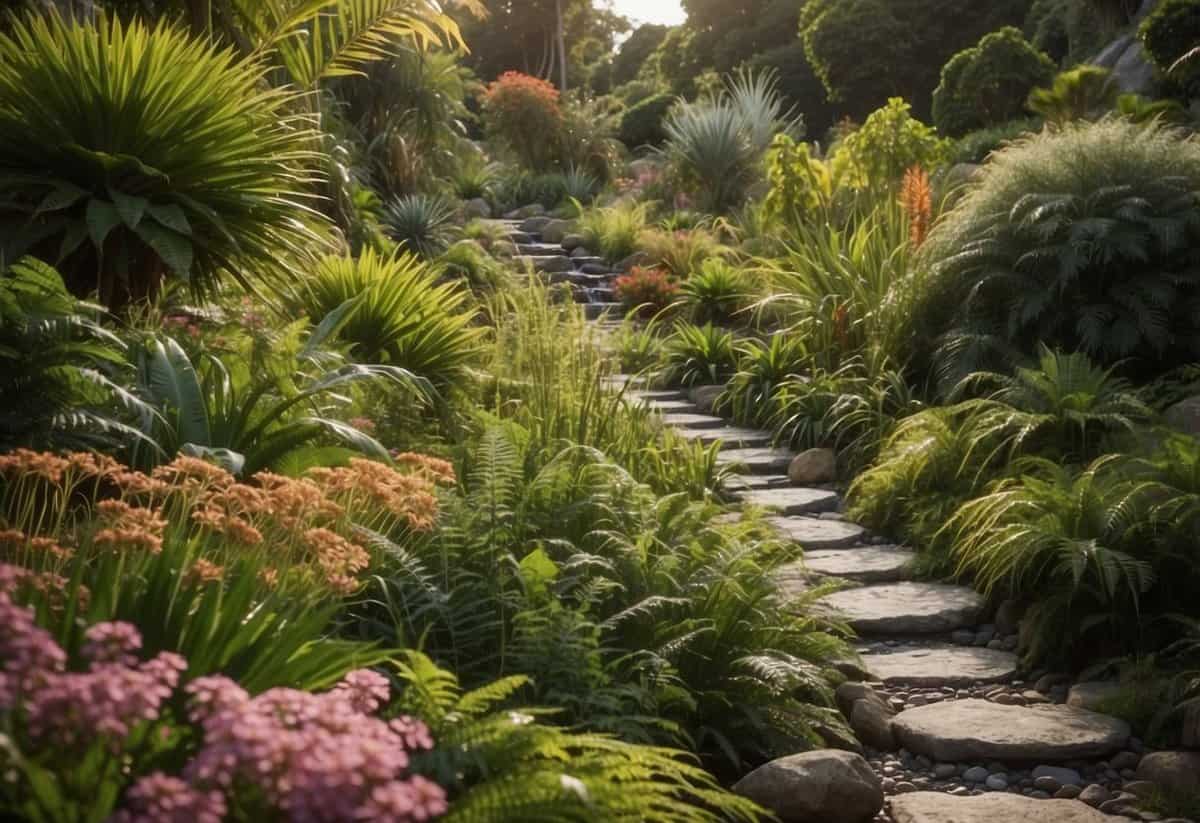
Another great advantage of native gardens is their ability to attract local wildlife. Birds, insects, and other creatures will feel right at home among the plants they are familiar with. This helps create a thriving ecosystem in your own backyard. Your garden will not only look beautiful but also support local biodiversity.
1) Kowhai Trees

Kowhai trees are a fantastic addition to your native New Zealand garden. Known for their brilliant yellow flowers, these trees are a magnet for birds and bees due to their nectar-rich blooms.
They can grow to various heights, from the dwarf Sophora prostrata at 1-2 meters to the tall Sophora tetraptera, reaching up to 15 meters.
2) Pohutukawa trees

Pohutukawa trees are a wonderful choice for your native New Zealand garden. Known as the ‘New Zealand Christmas Tree,’ their red flowers bloom from November to January. These strong trees grow up to 25 meters tall and offer shade and beauty.
Pohutukawa trees thrive in coastal areas and can handle strong winds and salty air. They are perfect for beachside gardens, where they can create a stunning and iconic landscape.
You can see the famous pōhutukawa at Cape Reinga, which stands as a spiritual symbol in Maori legend. Add this beautiful tree to your garden for a touch of New Zealand’s natural heritage.
3) Harakeke (New Zealand flax)
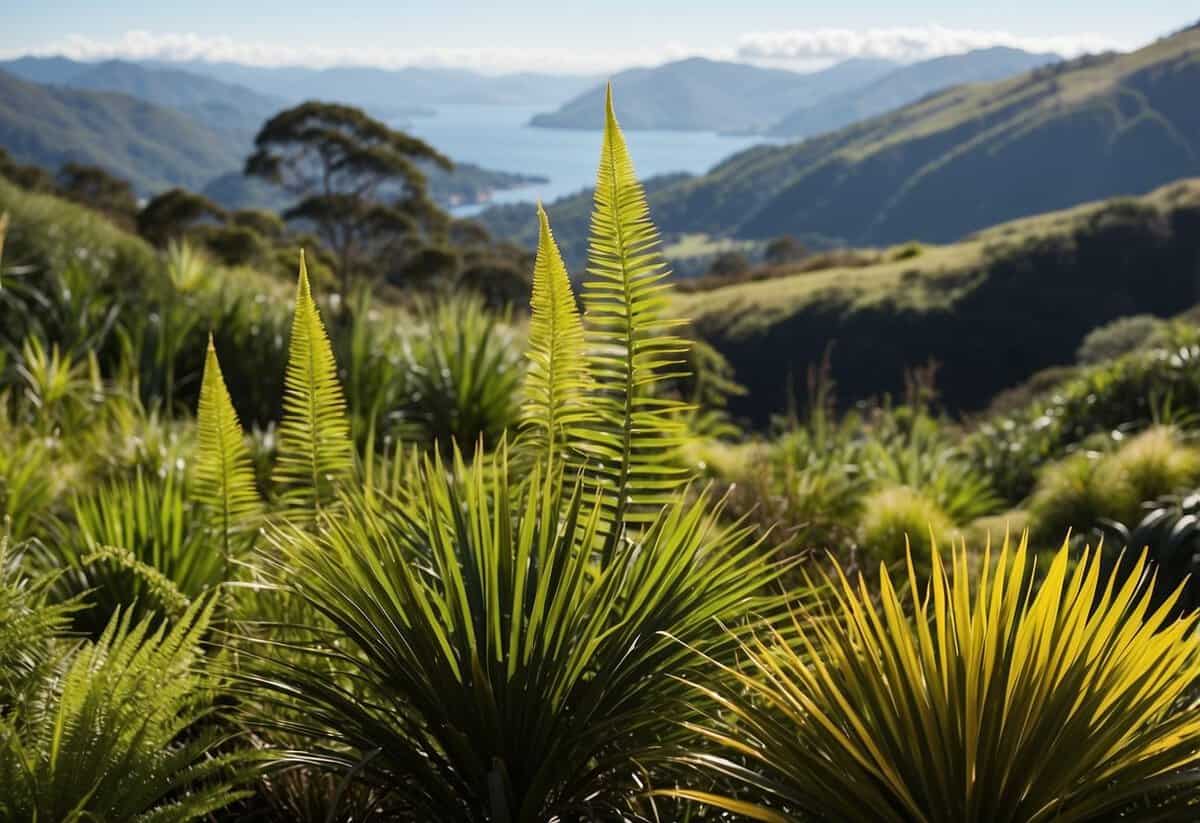
Harakeke, or New Zealand flax, is a versatile and hardy native plant. It can thrive in many conditions, including cold, wind, and coastal spots.
With over 50 species, harakeke offers diverse options for your garden. It’s useful for both decorative and practical purposes, such as weaving.
Try adding this low-maintenance plant for a touch of natural beauty and cultural heritage. Learn more about the different types of harakeke at the Auckland Botanic Gardens.
4) Cabbage trees

Cabbage trees are a great addition to any native garden in New Zealand. These trees, known as tī kōuka, are quite distinctive with their tall, slender trunks and long, narrow leaves.
Cabbage trees can grow up to 20 meters tall and thrive in wet, open areas. They are especially common on farms and in swamps.
One interesting thing about cabbage trees is their ability to survive fire damage. Their corky bark protects the growing tissue, making them quite resilient. You can learn more about cabbage trees here.
5) Mānuka bushes

Mānuka bushes are a fantastic addition to your native garden. These shrubs are known for their hardy nature and beautiful small white or pink flowers.
Mānuka is not only visually appealing but also beneficial for attracting bees, which produce high-quality Mānuka honey.
Planting Mānuka bushes can improve the value of your land and create a more vibrant ecosystem. Consider incorporating these versatile bushes into your garden design.
6) Kaka beak plants

Kaka beak plants are a wonderful addition to your native New Zealand garden. They have striking red flowers that resemble the beak of a parrot, which is how they got their name.
These plants are native to New Zealand and are known for their vibrant clusters of blooms. You can learn more about them from New Zealand native plants.
To grow Kaka beak plants successfully, keep them well-watered, especially in the summer. If you notice leaf loss, it could be due to the Clianthus Caterpillar. More tips can be found here.
7) Kohuhu Shrubs
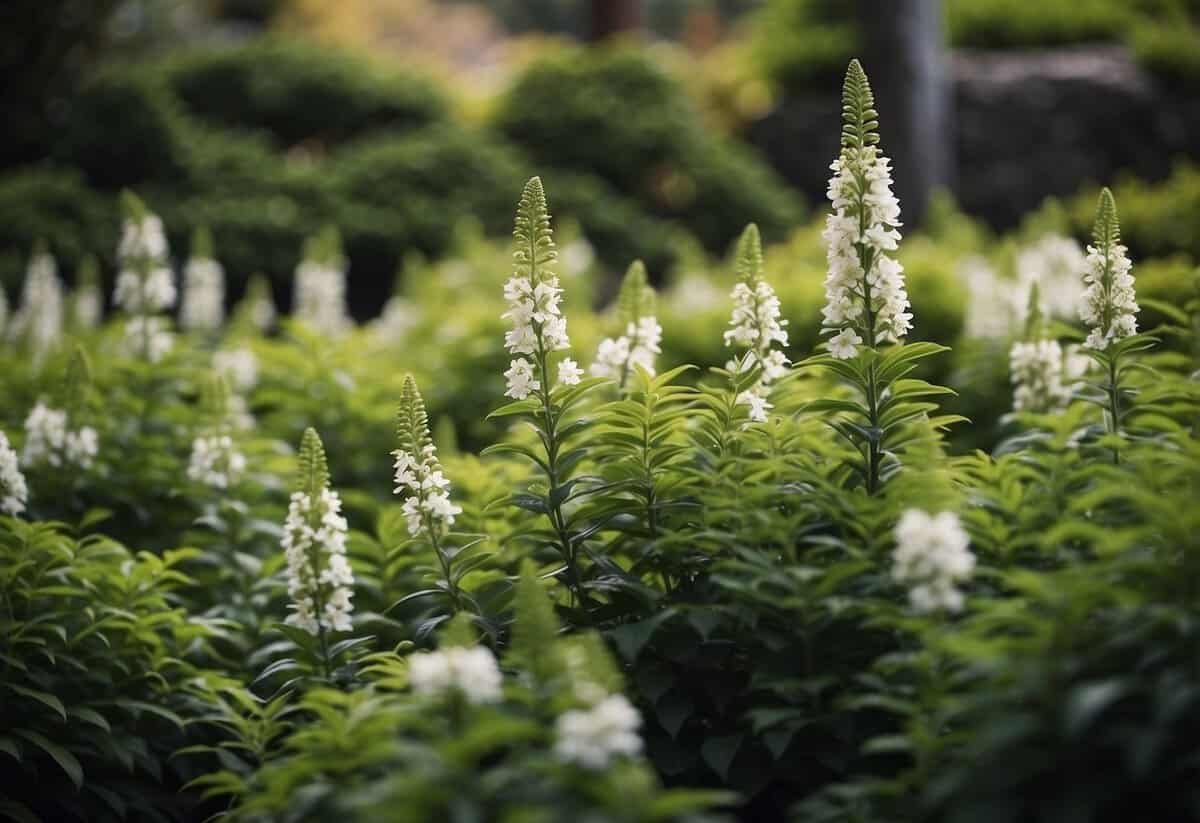
Kohuhu shrubs, also known as Pittosporum tenuifolium, are native to New Zealand. These evergreen shrubs can grow up to 10 meters tall.
Kohuhu features pale green foliage on black stems and has wavy leaves about 3-6 cm long. During spring, they produce dark red to purple flowers that add a pop of color to your garden.
You can plant Kohuhu shrubs in full sun or partial shade. They blend well with other native plants in your garden, creating a harmonious and attractive landscape.
For more gardening ideas, explore Pittosporum Guides & Hedge Advice.
8) Griselinia hedges

Griselinia hedges are a fantastic choice for your garden. They have lush, evergreen leaves that provide year-round greenery. This makes them perfect for privacy and blocking unwanted views.
You will love how fast they grow, creating a dense, green screen quickly. They are also quite hardy, handling a range of conditions, including coastal exposure.
Planting Griselinia is simple. Just dig a hole twice the size of the root ball and mix compost into the soil. You can find detailed planting guides here. Enjoy the elegance Griselinia brings to your garden.
9) Akeake Trees
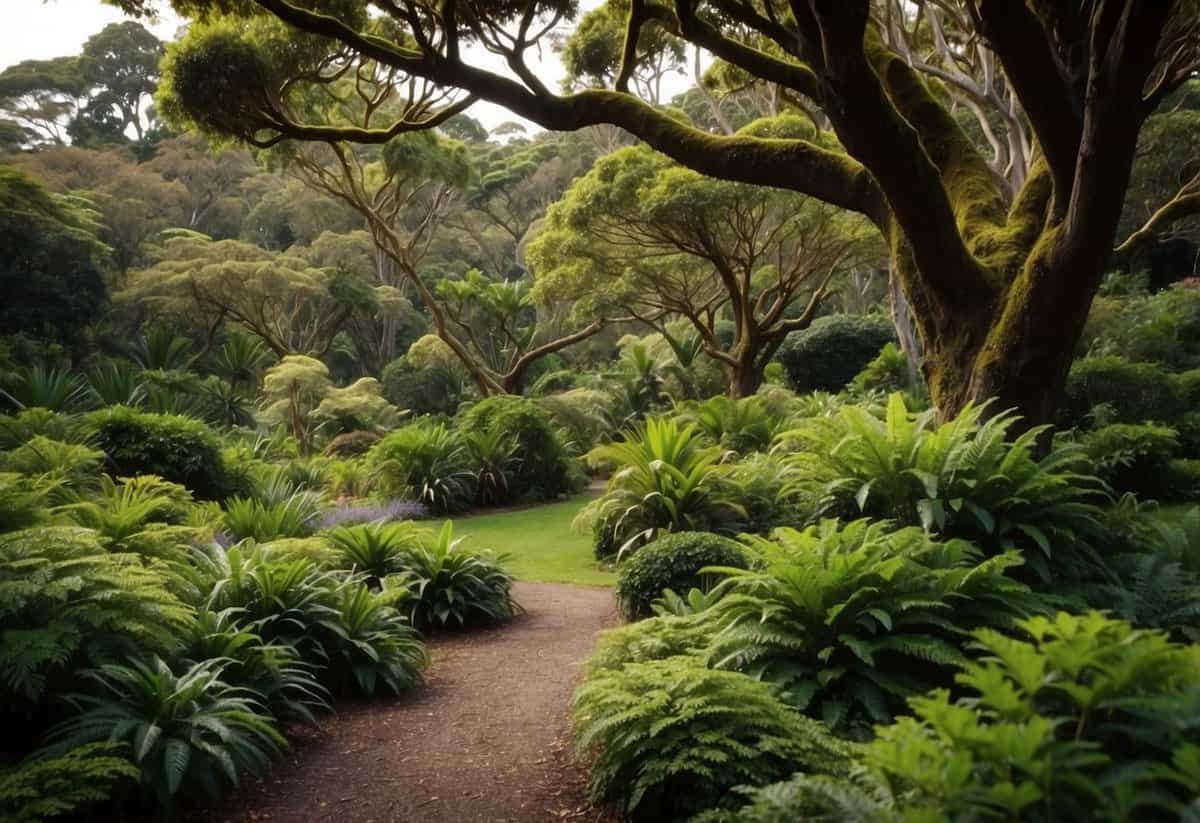
Akeake trees are a great addition to your native New Zealand garden. These trees grow quickly and can be shaped into hedges or screens. You can also let them grow naturally for a more wild look.
The wood of akeake trees is very hard. It was used by Maori to make weapons and tools. The Purple Akeake adds a unique touch to your garden with its vibrant colors.
Growing akeake trees supports local wildlife. They attract beneficial insects and birds, helping to promote a healthy ecosystem in your backyard.
10) Toetoe (native grasses)
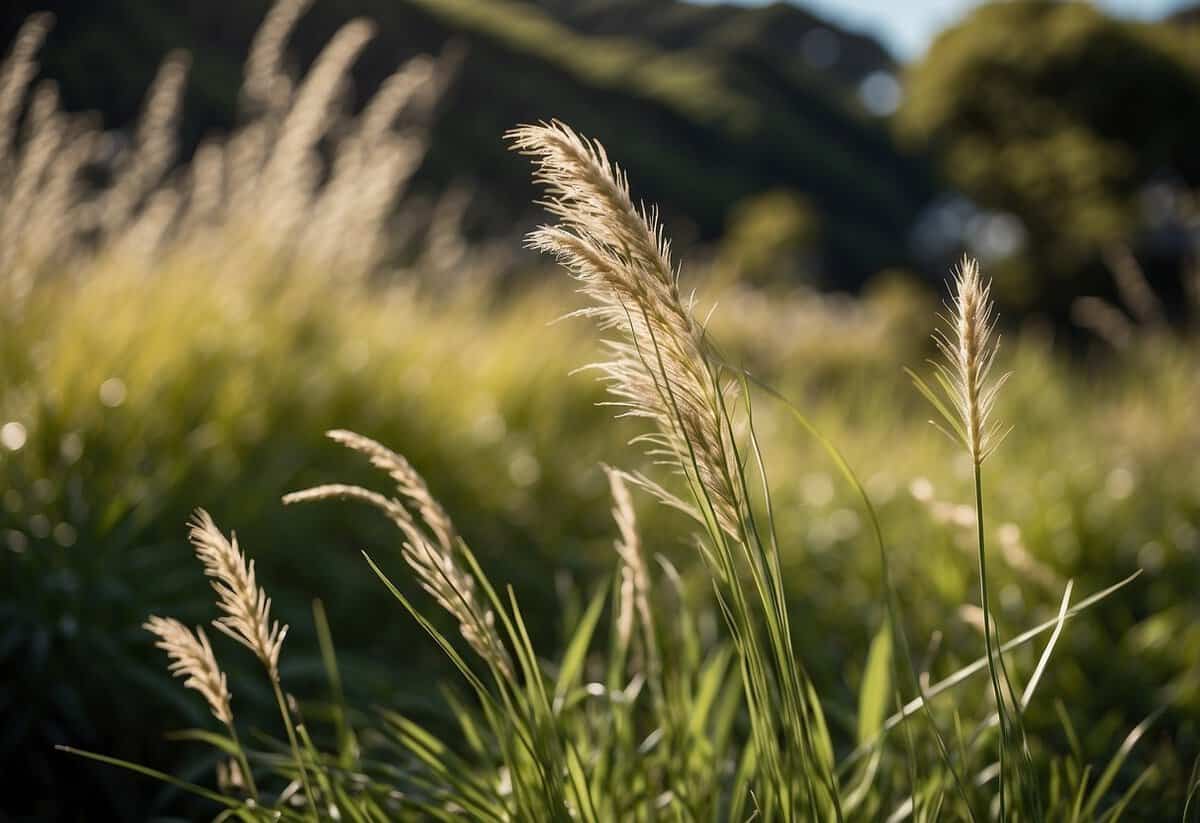
Toetoe is a beautiful native grass from New Zealand. It’s known for its tall, graceful plumes that move gently in the wind. The slender, arching leaves form large tufts, and some species can grow to impressive heights.
Toetoe is ideal for beachfront gardens and erosion control projects due to its adaptability to coastal conditions. You can easily mix it with other native plants for more contrast and visual interest. Learn more about Toetoe to see how it fits into your garden plans.
Benefits of Native Gardens

Creating a native garden in your backyard has many benefits. First, native plants are well-adapted to the local environment. This means they need less water, fertilizer, and pesticide compared to non-native plants.
Another benefit is supporting local wildlife. Native plants provide food and shelter for birds, bees, and butterflies. These critters play a big role in pollinating flowers and controlling pests.
Native gardens are also low-maintenance. Because these plants are suited to the local conditions, they tend to thrive with minimal care. This saves you time and effort in gardening.
Using native plants can help preserve the local ecosystem. It keeps the region’s unique plant life intact and prevents the spread of invasive species that could harm the environment.
Here are a few highlights:
- Water Conservation: Native plants need less water.
- Wildlife Habitat: Provides food and shelter for local wildlife.
- Low Maintenance: Less work for you.
- Environmental Preservation: Helps maintain the local ecosystem.
Follow these guidelines and enjoy the benefits of creating your own native garden. For more tips, check out this guide on designing a native New Zealand garden.
How to Choose Plants for Your Native Garden

To create a stunning native garden, it’s crucial to know your local climate and pick the right plants. You need plants that will thrive where you live and under your specific garden conditions.
Understanding Your Local Climate
Your local climate determines which plants will thrive in your garden. Check your area’s temperature range, rainfall, and soil type. New Zealand has varied climates, from the subtropical north to the temperate south.
Know if your garden gets a lot of sunlight or stays mostly in the shade. Coastal gardens might need plants that can handle salty air and strong winds. For example, plants like Astelia and Puka are known to tolerate such conditions well.
Remember to consider frost. Some native plants, like the Kowhai, are hardy, but others may need a more sheltered spot. Tailor your plant choices to these specific needs, ensuring they will grow well in your garden’s unique environment.
Selecting Appropriate Native Species
Choosing the right native species is essential for a vibrant and sustainable garden. Look for plants that provide food and shelter for native birds. For instance, Kowhai’s yellow flowers attract Tui birds, while other plants offer seeds or berries that birds love.
Create contrast in your garden with different foliage colors and heights. Use plants like Libertia Peregrinans for orange tones and Phormium cookianum purpurea for purples. These will make your garden visually appealing.
Mixing plants with different textures, such as ferns and shrubs, can add depth. If you have a damp area, ferns are perfect. In dry spots, consider tougher species like Coprosma.
By carefully selecting native species, you ensure your garden not only looks great but also helps local wildlife thrive.
Best Practices for Maintaining Your Native Garden

Creating and maintaining a native garden in New Zealand involves caring for specific plant needs. Key practices include proper watering, soil management, and addressing pests and diseases.
Watering and Irrigation Tips
Proper watering is essential for your native garden. Newly planted natives need more frequent watering until they establish roots, while mature plants can handle less frequent watering.
- Water Deeply: Ensure water reaches deep into the soil. This encourages roots to grow deeper, making plants more drought-resistant.
- Morning Watering: Watering in the morning reduces evaporation and allows plants to dry out before evening, reducing the risk of fungal infections.
- Use Mulch: Apply mulch around plants to retain soil moisture and reduce the need for frequent watering.
Soil Management Techniques
Managing soil is crucial for the health of your plants. Native plants thrive in well-aerated, nutrient-rich soil.
- Add Compost: Enrich soil by adding organic material like compost. This improves soil structure and fertility.
- Aerate Soil: Fork or dig the soil to increase oxygen flow. This helps roots to grow better.
- Adjust for Soil Type: In clay soils, use a clay breaker to enhance drainage. For sandy soils, add compost to improve water retention.
Pest and Disease Control
Even native plants can suffer from pests and diseases. Monitoring and taking preventive measures can keep your garden healthy.
- Regular Checks: Inspect your plants regularly for signs of pests or diseases. Early detection can save plants.
- Natural Predators: Encourage beneficial insects like ladybugs that eat harmful pests.
- Non-Toxic Methods: Use natural remedies like neem oil or insecticidal soap. Avoid harsh chemicals that can harm the environment.
Investing time in these practices ensures your native garden thrives. Water thoughtfully, enrich and aerate your soil, and stay vigilant against pests and diseases for a flourishing garden.







